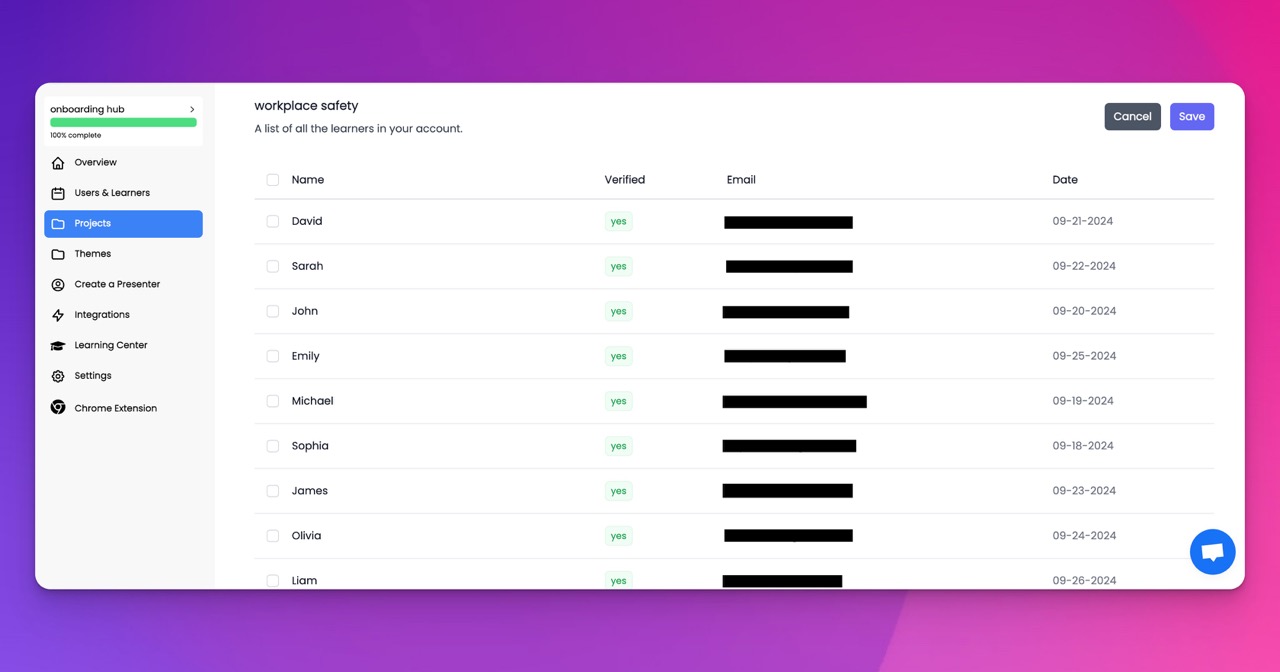🎉 Trainday now integrates with Zendesk and Hubspot 🎉 Trainday now integrates with Zendesk and Hubspot 🎉 Trainday now integrates with Zendesk and Hubspot
🎉 Trainday now integrates with Zendesk and Hubspot
🎉 Trainday now integrates with Zendesk and Hubspot
Contact
A New Flavor of Training: Creating Consistent Learning Experiences in Casual Dining
In the ever-evolving landscape of casual dining, where the competition is fierce, and customer expectations are high, creating a consistent and effective training program is crucial. The training process in casual dining restaurants needs to be dynamic, engaging, and uniform across all levels to ensure that every member of the team delivers the quality of service that customers expect. This blog post will explore innovative strategies for creating consistent learning experiences in casual dining, adding a new flavor to the traditional training methods.
Tailoring Training to Casual Dining Needs
Casual dining restaurants have unique training needs, focusing on speed, efficiency, customer interaction, and culinary excellence.
Interactive and Practical Training
Hands-on Approach: Encourage a hands-on approach to training, where employees learn by doing. This could include role-playing customer service scenarios or participating in cooking demonstrations.
Technology-Enhanced Learning: Utilize digital tools and platforms for training, such as video tutorials, interactive modules, and mobile apps to make learning more engaging and accessible.
Standardizing Training Across Locations
Unified Training Materials: Develop standardized training materials that can be used across all restaurant locations to ensure consistency in service and operations.
Train-the-Trainer Programs: Implement a train-the-trainer program to ensure that in-house trainers at different locations are equipped to deliver the training consistently.
Fostering a Culture of Continuous Learning
Creating an environment that values continuous learning and improvement is key to maintaining high standards in casual dining.
Ongoing Training Opportunities: Offer regular training sessions to keep staff updated on new menu items, customer service techniques, and operational changes.
Feedback and Adaptation: Encourage feedback from employees on training programs and be willing to adapt and update training methods based on this feedback.
Addressing the Challenges of High Turnover
High employee turnover is a common challenge in casual dining, and training programs need to be designed to address this.
Accelerated Onboarding: Develop an efficient onboarding process to quickly bring new employees up to speed.
Cross-Training: Implement cross-training so employees can perform multiple roles, ensuring smooth operations even when staff turnover is high.
Measuring Training Effectiveness
To ensure the training programs are effective, it's important to measure their impact.
Performance Metrics: Use performance metrics to gauge the effectiveness of training programs in improving service quality and operational efficiency.
Customer Feedback: Regularly collect and analyze customer feedback to assess the impact of training on the dining experience.
Conclusion
In casual dining, where the ambiance is relaxed but the pace is fast, training programs need to be dynamic, engaging, and consistent. By incorporating interactive learning, standardizing training, fostering a culture of continuous learning, addressing turnover challenges, and measuring effectiveness, casual dining establishments can create a robust training environment. This new flavor of training ensures that staff at all levels are well-equipped to provide an exceptional dining experience, setting the restaurant apart in a competitive market.
Accelerate Compliance.
Deliver OSHA-Ready Courses Instantly.
Empower your team with data-driven training solutions tailored to your industry's safety standards. Stay compliant, reduce risks, and boost productivity with AI-powered course creation.
